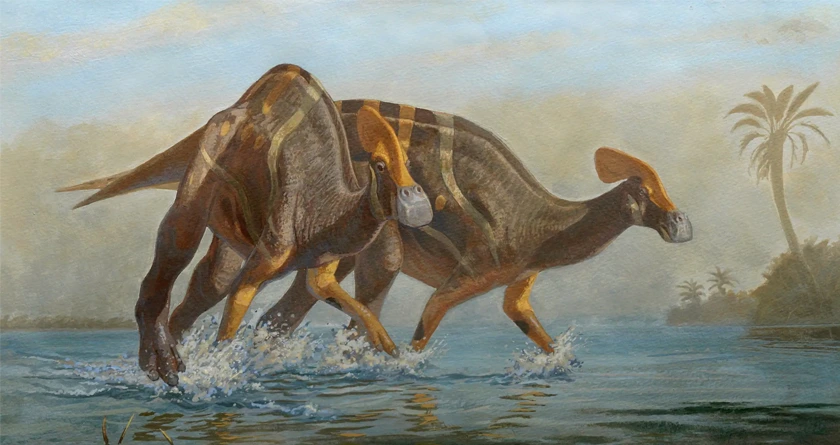
Remains of a new communicative dinosaur discovered in Mexico
Novel Dinosaur specimen traced by Mexican paleontologists…learn more…
Wednesday, 19th May 2021
According to the latest research conducted by Mexican paleontologists, a new dinosaur species identified is thought to have been highly communicative. It seems that they made use of low-frequency sounds similar to elephants to communicate with each other. The sample traced by the researchers has been given the name of TIatolophus Galorum and is believed to have expired about 72 million years back in the Mexican region which is currently the northern Mexican state of Coahuila. The scientists have initially discovered the dinosaur’s tail and later they also found a major part of its skull consisting of a 4.3 ft hollow, bony crest that the dinosaur probably utilized for communicating. Also, they came across its bony structures such as the shoulder and the femur.
"We are calculating the size, which could be between eight meters and 12 meters long because just the tail is around six meters," said Angel Alejandro Ramirez, a paleobiologist in the team.
"We believe that these dinosaurs were very communicative. They even produced and perceived low-frequency sounds like those made by elephants, which travel several kilometers and are imperceptible to humans," added Angel Alejandro Ramirez.
Soon after the announcement of this amazing discovery, the National Institute of Anthropology and History (INAH) came up with the assumption that those "peaceful, but talkative" creatures might also have had the ability to give out loud sounds for scaring the predators away.
Also Read: Modified Strain of Mosquitoes Takes Flight in Florida to Combat Incursive Variety.
The researchers believed that the crest of the Tlatolophus galorum might have been of red color.
"We believe that these dinosaurs, like modern birds, saw in color and so these structures like the crest were possibly brightly colored. They could have been completely red, or multi-colored, with spots," said Ramirez.
Still, the discovery is at its investigation stage but the research paper related to this ancient creature has been published in the science journal titled Cretaceous Research, as per the information furnished by the INAH.
"It is an exceptional case in Mexican paleontology," read the journal. "Highly favorable events had to occur millions of years ago, when Coahuila was a tropical region, for it to be conserved in the conditions it was found in."
The nomenclature Tlatolophus has been derived from the tlahtolli—which stands for word as per the indigenously formed Nahauti language- and the word ‘Iophus’ in Greek language meaning crest, said the researchers.
The News Talkie Bureau
Source:
The Hindu











